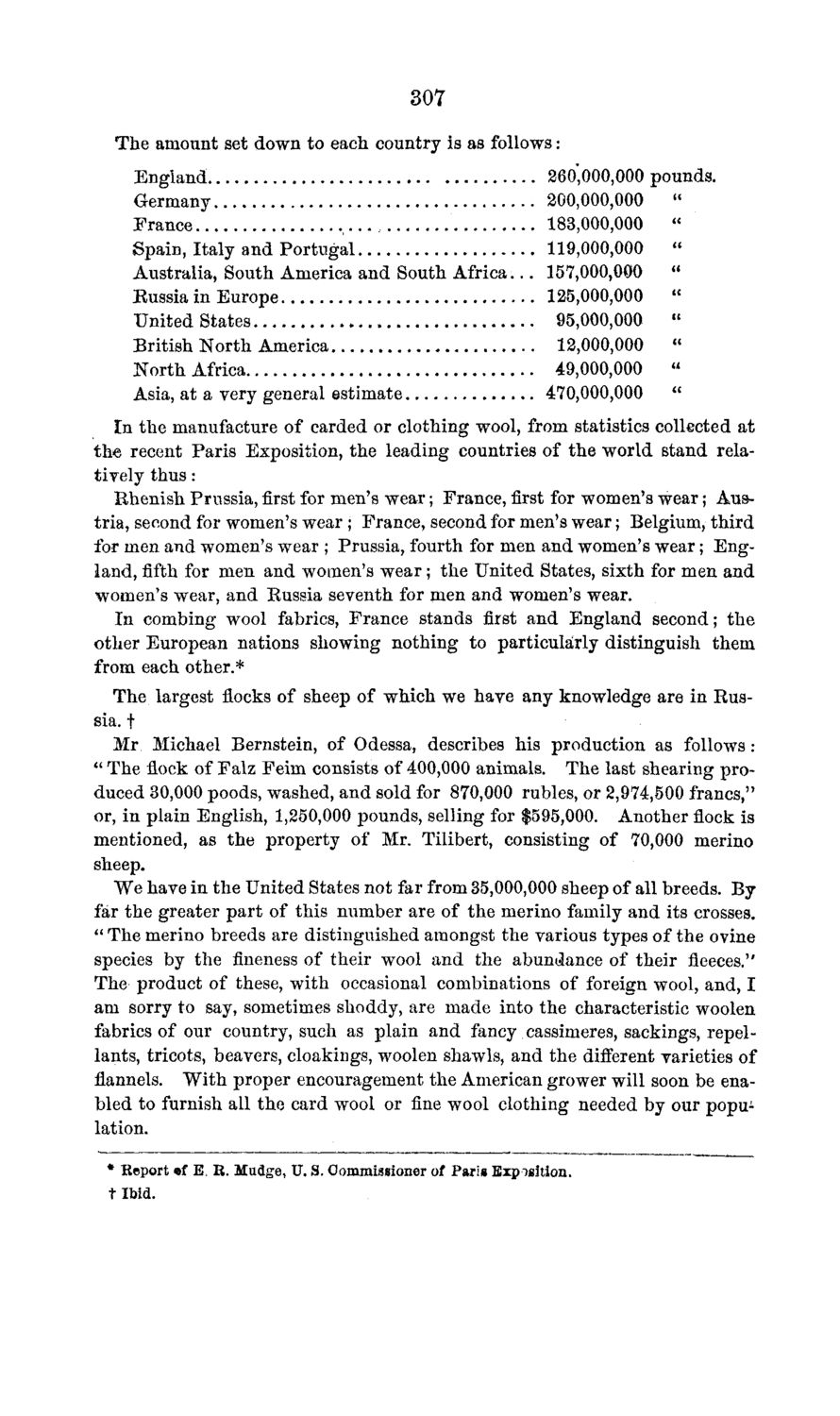| |
| |
Caption: Board of Trustees Minutes - 1869
This is a reduced-resolution page image for fast online browsing.

EXTRACTED TEXT FROM PAGE:
307 The amount set down to each country is as follows: England 260*000,000 pounds. Germany 200,000,000 France ,... , 183,000,000 Spain, Italy and Portugal 119,000,000 Australia, South America and South Africa... 157,000,000 Russia in Europe 125,000,000 United States . 95,000,000 British North America 12,000,000 North Africa .. 49,000,000 Asia, at a very general estimate 470,000,000 In the manufacture of carded or clothing wool, from statistics collected at the recent Paris Exposition, the leading countries of the world stand relatively thus : Bhenish Prussia, first for men's wear; France, first for women's wear; Austria, second for women's wear; France, second for men's wear; Belgium, third for men and women's wear ; Prussia, fourth for men and women's wear; England, fifth for men and women's wear; the United States, sixth for men and women's wear, and Russia seventh for men and women's wear. In combing wool fabrics, France stands first and England second; the other European nations showing nothing to particularly distinguish them from each other.* The largest flocks of sheep of which we have any knowledge are in Russia, f Mr Michael Bernstein, of Odessa, describes his production as follows : " The flock of Falz Feim consists of 400,000 animals. The last shearing produced 30,000 poods, washed, and sold for 870,000 rubles, or 2,974,500 francs," or, in plain English, 1,250,000 pounds, selling for $595,000. Another flock is mentioned, as the property of Mr. Tilibert, consisting of 70,000 merino sheep. We have in the United States not far from 35,000,000 sheep of all breeds. By far the greater part of this number are of the merino family and its crosses. " The merino breeds are distinguished amongst the various types of the ovine species by the fineness of their wool and the abundance of their fleeces." The product of these, with occasional combinations of foreign wool, and, I am sorry to say, sometimes shoddy, are made into the characteristic woolen fabrics of our country, such as plain and fancy cassimeres, sackings, r e p l iants, tricots, beavers, cloakings, woolen shawls, and the different varieties of flannels. With proper encouragement the American grower will soon be enabled to furnish all the card wool or fine wool clothing needed by our popu^ lation. * Report «f E, R. Madge, U. S. Commissioner of Parig Exposition, t Ibid.
| |